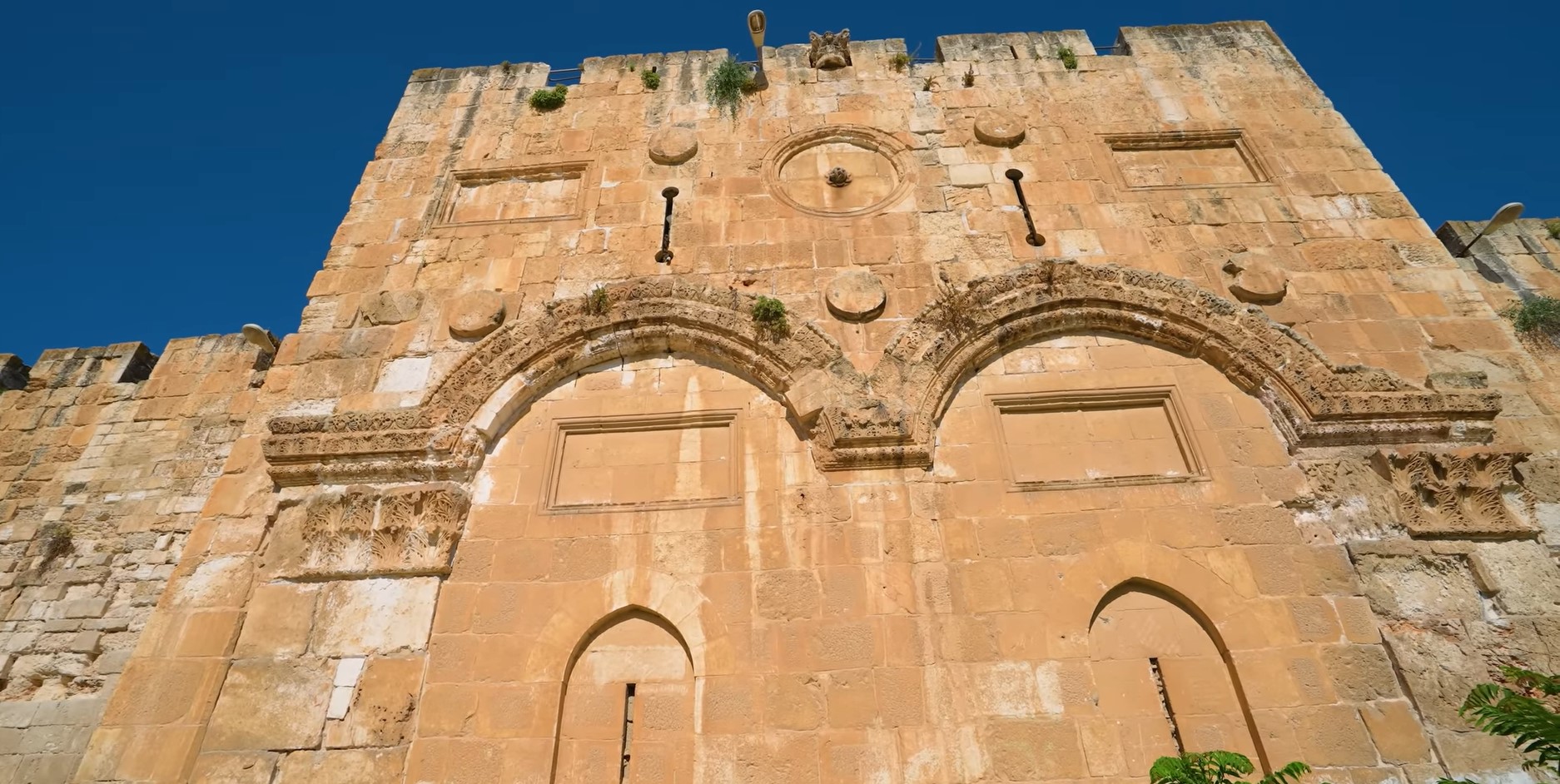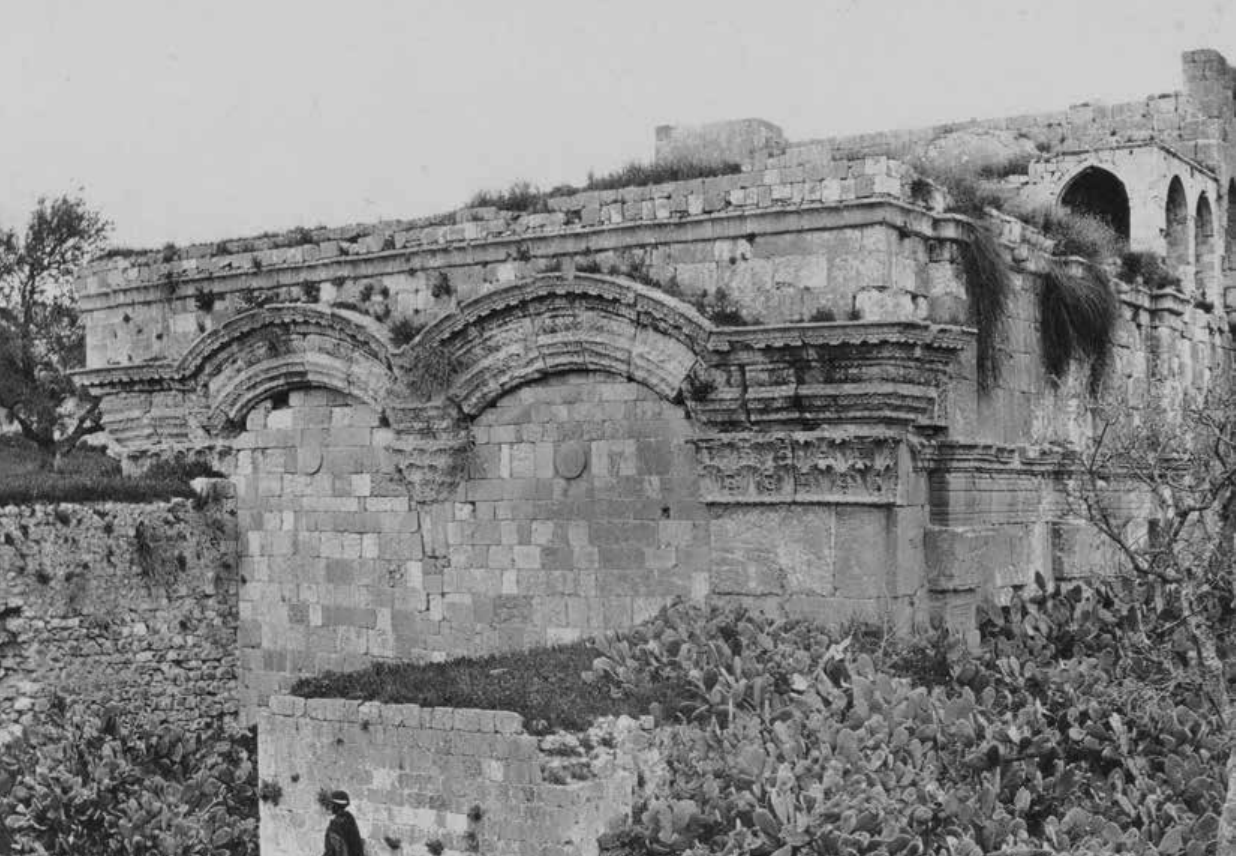Al-Rahma Gate - Golden Gate
A great closed door in the eastern wall of the blessed Al-Aqsa Mosque, which also represents a part of the eastern wall of the Old City. Its height is 11.5 m. It is located inside a high building that descends to it by a long staircase from inside Al-Aqsa, where a hill descends. Bayt al-Maqdis strongly to the east, so the wall rises and the ground level descends.”
It is a door consisting of two gates, Al-Rahma on the south, and Al-Tawbah on the north. Its name is due to the cemetery of Al-Rahma adjacent to it from the outside, which includes the tombs of the companions Shaddad bin Aws and Ubadah bin Al-Samit, and in it are the graves of the martyrs of some of the Zionist massacres in Al-Aqsa. The construction and naming of this gate was an analogy and depiction of what was mentioned in the Holy Qur’an in the Almighty’s saying: Then a wall was erected between them, having a door on the inside of which is mercy, and on the outside of it is punishment.

Westerners call it another well-known name: the Golden Gate, and its reason is mainly due to the covering of the door inside Al-Aqsa with gold in the Umayyad era, or to the Christians' belief that it is the place from which Christ entered Al-Aqsa.
This door is one of the oldest gates of the blessed Al-Aqsa Mosque, and researchers say that its construction probably dates back to the Umayyad period during the reign of Abd al-Malik ibn Marwan, in terms of its architectural and artistic elements
The door remained open until the crusaders took it as their gateway to Al-Aqsa, because they believed that the Messiah, Jesus son of Mary, entered it, and that he was the one who would open it in the future, which is what there is no evidence for. The door, and still a large space in their beliefs. It is most likely that the closure was carried out by Sultan Salah al-Din al-Ayyubi, after the liberation of Jerusalem in 10/2/1187 AD, with the aim of protecting the city and the mosque from any invasion 27/7/583 possible.
The building located inside the gate on the side of the blessed Al-Aqsa Mosque was used as a hall for prayer, remembrance and supplication. And in it he put his valuable book Reviving the Sciences of Religion. This section and its hall were also built by the Islamic Heritage Committee, and it was used as a headquarters for its advocacy activities inside Al-Aqsa since 1992 AD until the Zionist occupation authorities dissolved the committee in 2003 AD.

